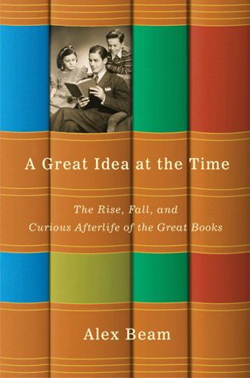A Great Idea

The decision by the Christian Science Monitor to no longer print a hard-copy version got me to thinking about my reading habits vis-à-vis that great American news appliance, the daily newspaper—and I was pushed into a state of befuddlement, realizing I had not picked up a piece of newsprint in . . . I cannot remember how long. The why of it I will take up another time, but in the instance of my local dailies, the Boston Herald and the Boston Globe (except for Gail Caldwell, Mark Feeney, and Katherine Powers—interesting voices all), both long ago became irrelevant to my life and cluster of habits. Considering that I began reading newspapers back in 1957, this divestiture I am sure augurs something—as in, obviously, we can take the “papers” out of “newspapers.”
Columnist Alex Beam is another reason to brave the tactile smudginess of the Globe. Beam, among other things, regularly directs elegant strokes—or, if you will, lashes of iconoclasm—at the World’s Greatest University and other ripe veins of pretense and pomposity. Beam (Gracefully Insane: Life and Death Inside America’s Premier Mental Hospital) has a new book, A Great Idea at the Time: The Rise, Fall, and Curious Afterlife of the Great Books (Public Affairs), which examines the so-called Great Books movement that arose in the late ‘40s and its two main proselytes, University of Chicago wunderkind president Robert Hutchins and mad-dog public intellectual-qua-philosopher Mortimer Adler.
It is indeed a lucid trip in the Wayback Machine through some of the fundamental issues regarding the nature of a liberal arts education. The creation of a Great Books canon was Hutchins’s and Adler’s answer—which in the status conscious society of mid-20th-century America became a commodity sold door to door (or as the publisher asks, “Why did a million American households buy books by Hippocrates and Nicomachus from door-to-door salesmen?"). Among the other benefits of this smart and well-conceived intellectual excursion is a sensibility that holds librarians as the unacknowledged legislators of the world. A good fulcrum upon which to balance a worldview.
